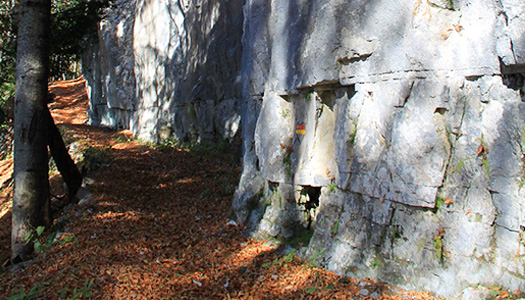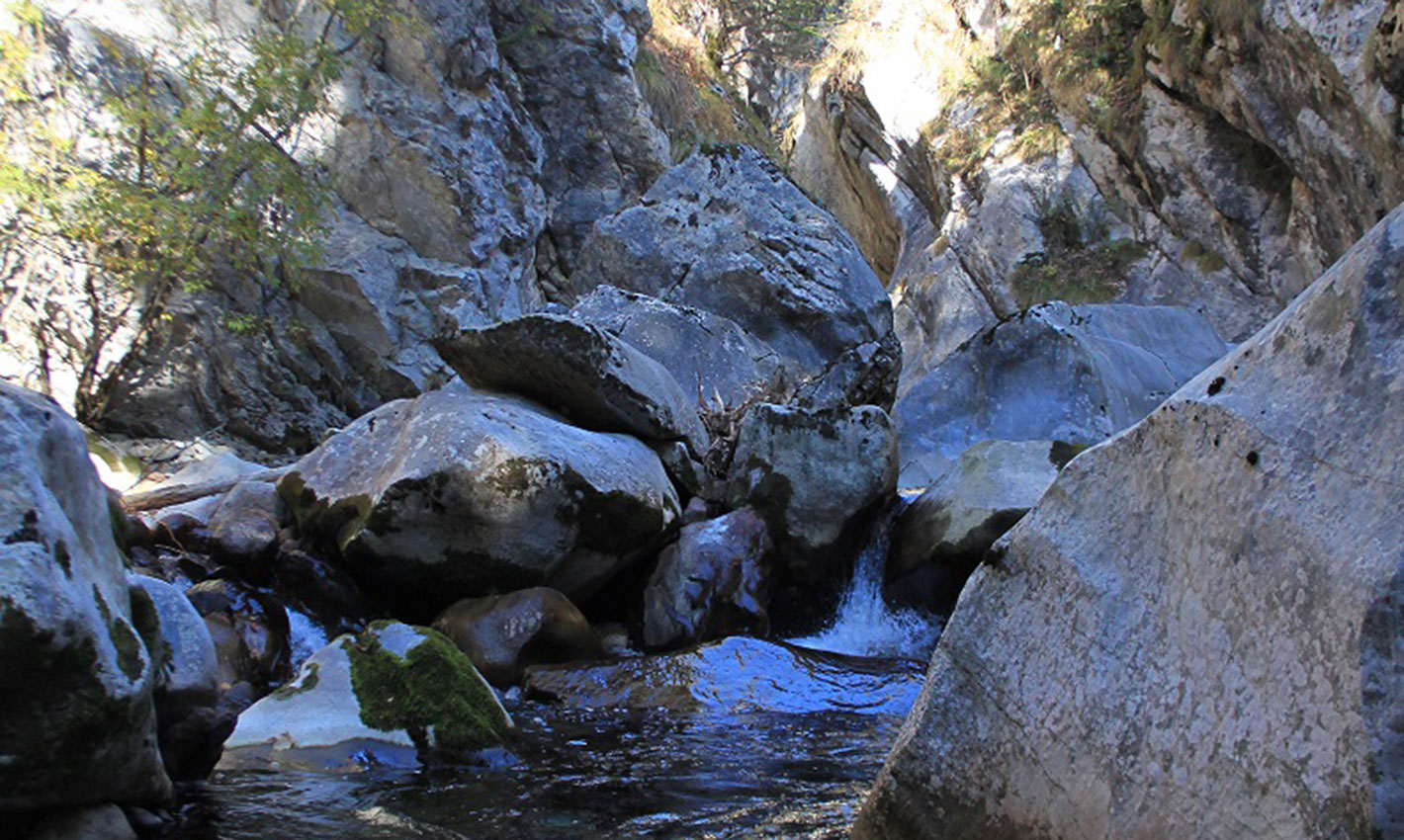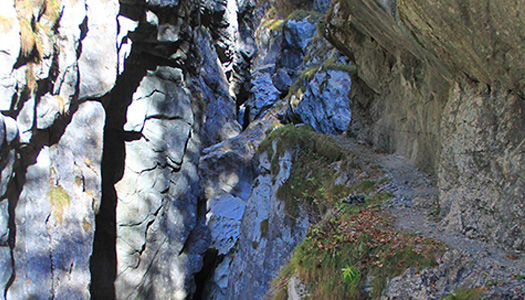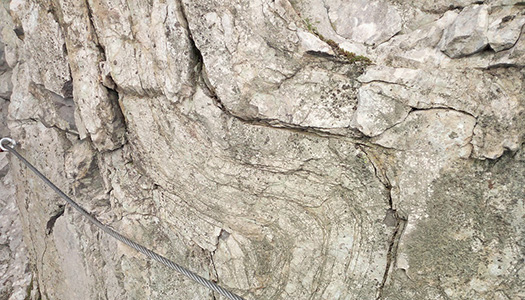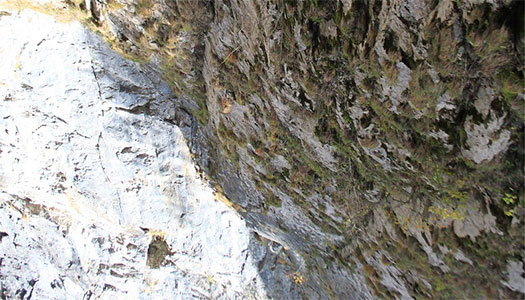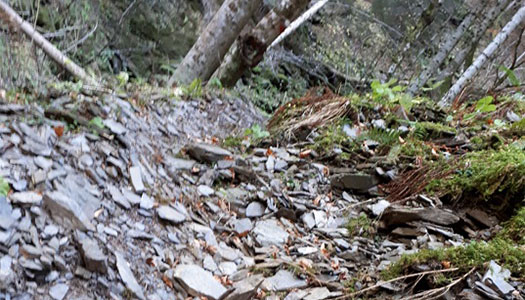While descending towards the mouth of the gorge, pay attention to the vertical wall of rock that you can observe upstream, to your left. It consists of pelagic limestones (and thus deposited in a marine environment) dating back to the end of the Devonian or the beginning of the Carboniferous …
Read more Vertical rock wall
To reach this point, you must make a short detour to the left. From here you can enjoy a view over the gorge as a whole. The riverbed is broader in some parts, while in others the waters flow within a very narrow canyon. You can grasp the different morphologies …
Read more A view of the gorge
Having reached the beginning of the path carved into the rock, in the middle to lower section of the gorge walls, you can see the morphologies derived from torrential erosion including smooth walls, erosion pots, undercuts, pools and falls. These morphologies are found along the entire path of the ascent …
Read more The mouth of the gorge
At this point, and along the entire gorge, the consequences of the strong compressions linked to the two orogeneses, the Hercynian (in the Upper Carboniferous) and the Alpine, still ongoing, are evident. As you walk within the gorge, in fact, you can observe numerous folds and faults in the rock, …
Read more The folds in the rock
From this point the contact between the two different lithologies is obvious. These are the deposits of pelagic limestones mainly from the Upper Devonian and those of the lower Carboniferous, (350 to 320 million years ago) of the of the Hochwipfel formation. The latter consist of sediments of continental origin …
Read more Different lithologies in contact with one another
During the Hercynian (the Upper Carboniferous) orogeny, the Carnic basin was characterized by strong tectonic movements that led to the deepening of some areas and the lifting of others. Submarine landslides thus led to the accumulation of sediments with variable granulometry including breccias, conglomerates, sandstones and pelites with characteristics that …
Read more The Hochwipfel formation

